How to create Routes on the PC and transfer them to your Navigator
You will need to have your Navigator connected in Sync Mode to be able to transfer data to and from it.
Start the Hema Navigator Explorer PC application. In this example, we are going to start with NO routes added.
Creating a route
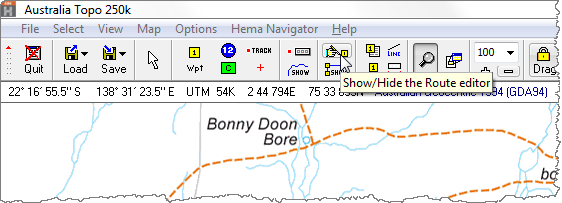

Click the Route Editor button on the toolbar to show the Route Editor window. As shown in the example below, The default route name is "Route 0001", and there are currently we have no waypoints added to the route.
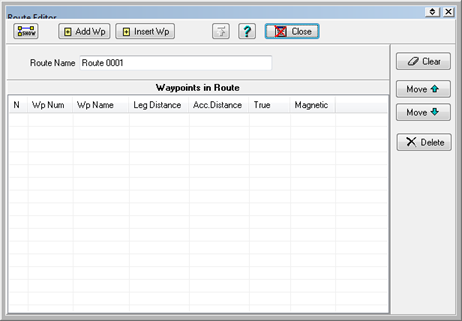

You can alternately show and hide the Route Editor window by clicking the Window Blind button. This can help if the window gets in the way while editing on the map.

Clicking the button again while the window is rolled up will roll it back down.

Click the Add WP button to to enter Route Add Waypoint mode. This button is a toggle, and when active, will put you into Adding Route Waypoints mode. You will see that the mouse pointer has now changed to reflect this, as shown below.
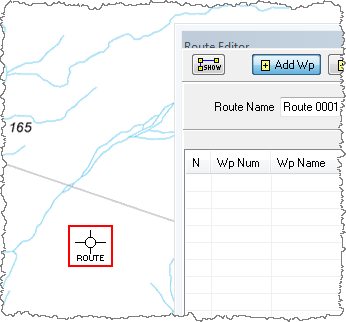
While this mode is active, clicking anywhere on the map will create a route waypoint at that location. Each time you add a new route waypoint, it will be joined to the previous one (by a straight line segment), allowing you to build up your route.
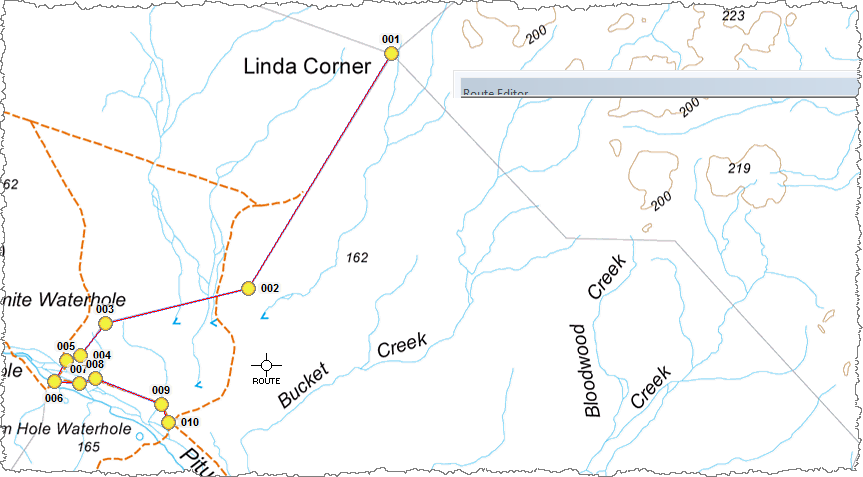
By default, route waypoints are named with an auto-incrementing number (within the current route), but the names of the points can be changed later, if required.
Once you have finished adding route waypoints to the route, click the Add WP button again to switch Route Add Waypoint mode off.
-png.png)
If you look at the Route Editor window again, and you will now see that there are some waypoints in the list, as you see below.

You can go ahead and give your route a name (route name length is limited to 9 characters). Notice that each segemtn or leg of the route is shown with a distance and bearing from the previous point.

Click the Close button to close the Route Editor window.
Saving the route into a file on your PC
Now that you have some route waypoints added to your route, you will need to save them to a file for safe keeping or transfer to your Navigator..

Click the Save button on the toolbar, then select the Save Route to File option from the drop-down menu.

You will prompted for a location to save your new route file.
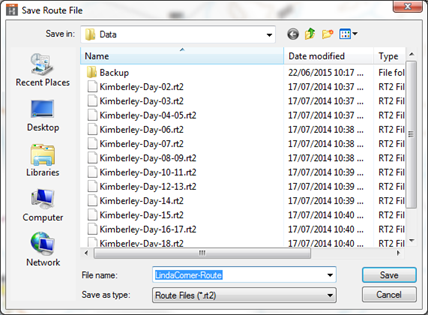
It is wise to give your file a useful name. ie. calling the file "FranksRoute" doesn't really help you in knowing what the file contains. In our example, as we have created a route around the Linda Corner area, we are going to call our file "LindaCorner-Route".
Everyone has their own way of naming files. Find one that suits you and that you understand. Remember, you may end up with lots of files, and trying to figure out which file has which route in it will be easier with a good naming scheme.
By default, on Windows 7 and Windows 8, the default file save location will be:
C:\Users\<Your_User_Name>\.Hema Navigator\Data
It is important that you save your file in this location. if you do not, the PC application will not know where to find it when you go to try and transfer the data to your Navigator in the next section of this article.

Click the Save button on the Save Route File window to save the file to your PC.
Transferring the route from your PC to your Navigator
The Hema Navigator runs the OziExplorerCE software to provide 4WD mode functionality.
The OziExplorerCE software uses the OziExplorer Data folder on the SD card in the Navigator as the default storage location for data such as tracks and routes.
Once your data file is saved on your PC, there are two basic methods of getting the data onto your Navigator:
- manually copying the file to the OziExplorer Data folder on the Navigator's SD card
- using the built-in transfer function within the Hema Navigator Explorer PC software.
The built-in transfer function is shown in this article.
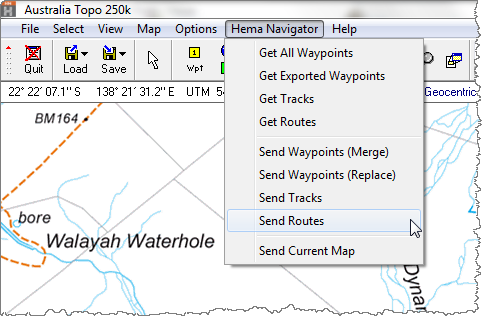
Click the Hema Navigator menu above the toolbar in the PC application, and choose the Send Routes option to send your new route to the Navigator.
The Send Routes to Hema Navigator window will appear. Choose the route(s) you want to transfer to your Navigator by placing a tick mark next to each required route.
You can also select all routes listed in the window at once using the All button.
The routes which appear in the list are all the route files which are contained in the default save location on your PC (C:\Users\<Your_User_Name>\.Hema Navigator\Data).
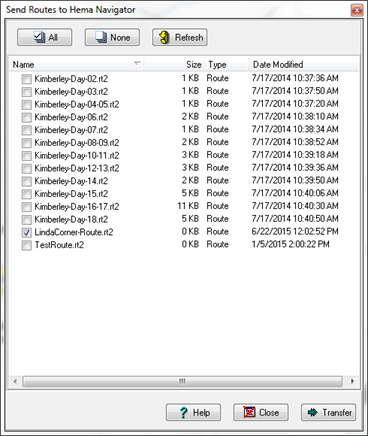

Once you are happy with the routes you have chosen, click the Transfer button to send these to your Navigator.
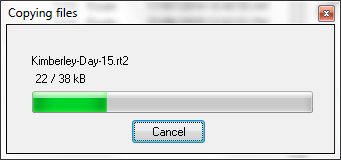
The transfer process will display a window showing the status of the transfer(s). If only one file is being transferred, the window usually appears for only an instant, as the transfer process is quite quick.
Once the data is transferred to your Navigator, start the OziExplorer (4WD mode) program on your Navigator.


Open the Routes page by tapping the Select Page button, then choosing the Routes page on the Select Page window.

On the Routes page, tap the Load Route button to open the Load Route File window.

You should see the file you created on your PC and transferred listed here.

Tap it to highlight the desired file, and then tap the Open button to load the route.
You can only have ONE route loaded at any given time (although there might be many routes stored in the OziInformation Box content. Put here some hints and tips.

Once your route is loaded, tap the Route FWD button on the bottom toolbar to commence navigation. The sofwtare will draw a bearing line directly from your current location to the first point in the route.

Tap the Stop Nav button on the bottom toolbar if you wish to cancel the current navigation operation.
.png?width=128&height=72&name=Hema%20Maps%20Logo%20(1).png)